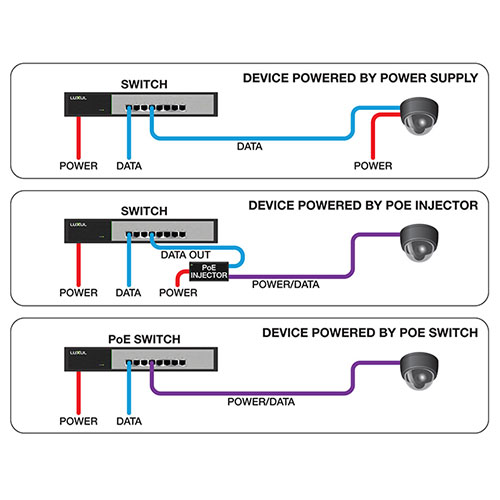Posted on 1/3/2018 by Legrand AV Team
By Lindsay Bull, technical writer
Welcome to our first ever installment of IPIQ Basics! Before we launch into our first topic—nodes—I’d like to make you aware that these Word of the Week posts will build on each other, eventually serving as a textbook of networking knowledge—for your reference and continuing education.

Nodes
When I think about the most basic of networking basics, my mind jumps to nodes. So what is a node?
Basically, a node is anything that connects to a network and can send and receive data. For example:
| Computers | Smartphones | Routers |
| Laptops | Smart bulbs | Switches |
| Access points | Tablets | Smart locks |
| Printers | Digital phones | Wireless speakers |
Is the device capable of connecting to my network? This list is in no way comprehensive; there are many, many more devices that could be considered nodes. If you’re curious whether the thing you’re thinking of is a node, use this simple checklist to qualify it:
- Is the device capable of connecting to my network?
- Can the device send data?
- Does the device receive data in return?
If you answered yes to all three of these questions, yes, the thing you’re thinking of is a node.
If you’re still not getting it, perhaps painting the full picture will help. Think about your printer. When you hit the print button on your computer, you send your printer a message saying, “Print this document.” Your printer receives that information, queues up your document to be printed, then sends a notification back to your computer that says, “I’ve received your request and am now printing the document.” Usually after this takes place, you see a little notification pop up on your computer that confirms your document is being printed.
In this scenario, both your computer and printer are nodes.
In order for this communication to take place, the computer and printer have to be able to identify each other, which is why each node has its own, unique network address. This brings us to the next topic of discussion, the difference between a source node and a destination node.
Source & Destination
Well, they’re kind of exactly what they sound like—nodes identified as either something sending data (source) or receiving it (destination).
So let’s revisit our scenario with the printer. When your computer told your printer to “print this document,” your computer was acting as the source node while your printer was acting as the destination node. Inversely, when your printer sent confirmation back to your computer that it had received the command, your printer was acting as the source node while your computer was acting as the destination node.
Almost all nodes can act as both source and destination nodes.
Hosts
So, then, what exactly is a host? You’ve heard node and host used interchangeably, no doubt.
The words are synonymous, generally speaking. However, a host is an end computing device; the term doesn't usually include network infrastructure devices. So, switches and access points (part of your network infrastructure) are nodes (they connect to the network and send/receive data), but—since they aren't considered computing devices—are not usually referred to as hosts. Printers, smartphones, laptops, etc. can be referred to as either nodes or hosts. Since we’re focusing on nodes in this post, we’ll leave it at that—to be visited another day.
Why do I care?
Excellent question!
When you’re designing a network, it’s important to be able to identify the types of nodes that will connect to that network. If you know the number and types of wired nodes, you’ll be able to size your network appropriately, enabling you to choose the appropriate switches for each application. Likewise, if you know the number and types of wireless nodes on your network, you’ll know how many access points and the supported features you’re going to need.
So when you’re building a network, be sure you’ve identified exactly what type of connectivity and applications that network will need to support so it can be designed and set up to run smoothly, providing the user experience we’ve come to expect from a Luxul network.

 All News
All News
